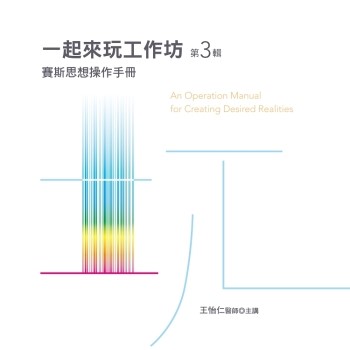The information contained in this text covers kindergarten, primary grades, middle school, and secondary school. It presents a balanced body of information for instruction between wholistic approaches and traditional approaches for the total literacy curriculum. This book includes the complete developmental aspects of skills necessary for competence in all literacy tasks from birth to adolescent literacy, the need for availability for teachers to assess the progress of all of these skills as they are presented in a wholistic fashion on a regular basis, the criteria of how decisions are made for remedial reading instruction, the interface of special education considerations for students experiencing literacy challenges, approaches for adolescent literacy programs, and abundant information on teaching English language learners. Two chapters are devoted to the writing process. The first one explains the necessary information which is a prerequisite to writing, and the second examines all aspects of writing which includes many professional forms of writing, the assessment of writing, andspecialized methods of teaching writing.A unique feature of this text is its integration of multiple wholistic approaches, with an emphasis on research validation of approaches, descriptions of the different ways that literacy can be taught in today’s schools, explanations of the clinical techniques available for literacy instruction, information on the science that is illustrating to us as educators on how the brain and central nervous system are intricately involved with the literacy processes, and discussions of the implementation of materials that may enhance perceptual processing for some students. Now more than ever we know that skill in literacy is a foundational skill that impacts all learning a student undertakes throughout their formal education, into the workplace and on to graduate studies. Thus, it is imperative to equip teachers with perspective and a skill set to address needs in the classroom. Thus, this text may not only be considered a teaching tool but also a handbook of approaches and reference guide for conditions that are not included in current textbooks.
In looking back at our 20 years of research using LEA with different populations, we have concluded that this 50-year-old method for literacy instruction is as viable today as it was in 1971 when it was developed by Russell Stauffer.| FindBook |
有 1 項符合
The Language Experience Approach and the Science of Literacy的圖書 |
 |
The Language Experience Approach and the Science of Literacy 作者:Traynelis Yurek 出版社:Anthem Press 出版日期:2024-05-14 語言:英文 規格:精裝 / 250頁 / 普通級/ 初版 |
| 圖書館借閱 |
| 國家圖書館 | 全國圖書書目資訊網 | 國立公共資訊圖書館 | 電子書服務平台 | MetaCat 跨館整合查詢 |
| 臺北市立圖書館 | 新北市立圖書館 | 基隆市公共圖書館 | 桃園市立圖書館 | 新竹縣公共圖書館 |
| 苗栗縣立圖書館 | 臺中市立圖書館 | 彰化縣公共圖書館 | 南投縣文化局 | 雲林縣公共圖書館 |
| 嘉義縣圖書館 | 臺南市立圖書館 | 高雄市立圖書館 | 屏東縣公共圖書館 | 宜蘭縣公共圖書館 |
| 花蓮縣文化局 | 臺東縣文化處 |
|
|
圖書介紹 - 資料來源:博客來 評分:
圖書名稱:The Language Experience Approach and the Science of Literacy
內容簡介
作者簡介
Dr. Elaine Traynelis Yurek has a strong research background in the areas of literacy, learning disabilities, emotional disturbance, and attention deficit disorders. She has presented and published extensively in these areas.
Dr. Mary Winifred Strong has published over 30 articles on reading methodology in state, national, and international journals and proceedings; written several book chapters in literacy and international proceedings; and coauthored a textbook on literacy coaching.Teaching and Assessing Writing in the Primary School: A Whole School Approach
Teaching and Assessing Writing in the Primary School: A Whole School Approach
Research-Based International Student Involvement: The Research-Tandem Model
Integrating Computational Thinking Through Design-Based Learning: Strategies for Integration in Different Disciplines
Critical Histories in Care and Education: Understanding the Connections Between the English Care and Education Systems from the Nineteenth Century to
Critical Histories in Care and Education: Understanding the Connections Between the English Care and Education Systems from the Nineteenth Century to
Developing Employability Capital in University Students: A Practical Guide
Discovery Science: 27th International Conference, DS 2024, Pisa, Italy, October 14-16, 2024, Proceedings, Part I
The University and the Algorithmic Gaze
Pragmatism and Historical Representation
Teaching and Assessing Writing in the Primary School: A Whole School Approach
Research-Based International Student Involvement: The Research-Tandem Model
Integrating Computational Thinking Through Design-Based Learning: Strategies for Integration in Different Disciplines
Critical Histories in Care and Education: Understanding the Connections Between the English Care and Education Systems from the Nineteenth Century to
Critical Histories in Care and Education: Understanding the Connections Between the English Care and Education Systems from the Nineteenth Century to
Developing Employability Capital in University Students: A Practical Guide
Discovery Science: 27th International Conference, DS 2024, Pisa, Italy, October 14-16, 2024, Proceedings, Part I
The University and the Algorithmic Gaze
Pragmatism and Historical Representation
|











